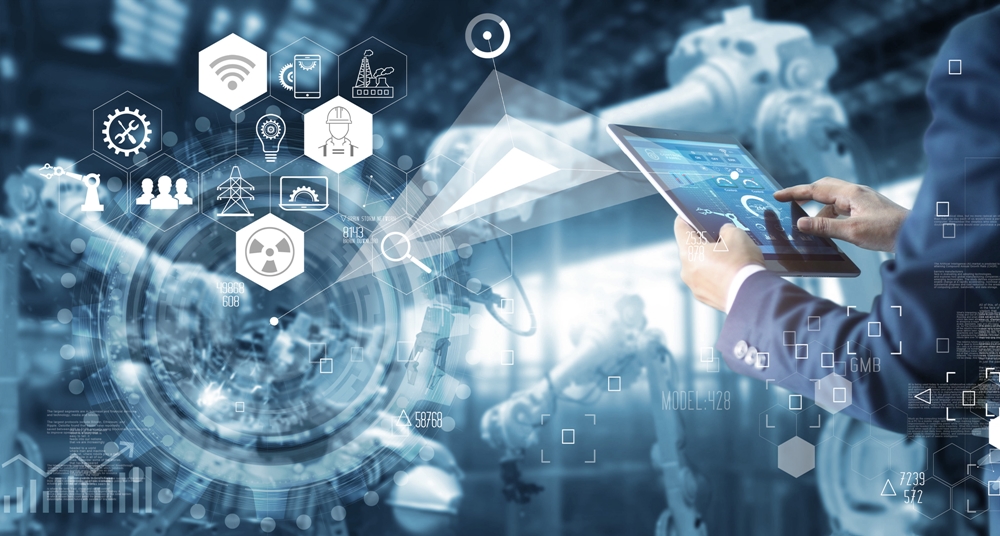In the current era, one of the biggest questions is “What are the usage of Big Data, AI, IoT & Cloud Computing and how are they dividing the change in the enterprise world?”. Some of the objectives are listed below:
- What is the usage of Big Data, and how do enterprises use it?
- What is the usage of AI, and how do enterprises use it?
- What is the usage of IoT, and how do enterprises use it?
What is the usage of Big Data, and how do enterprises use it?
Big Data is a phrase that encompasses all of the procedures and technologies involved in exploiting and managing massive data volumes. The need to comprehend trends, preferences, and patterns in the enormous database created when individuals interact with multiple systems and each other spawned the Big Data idea. Business companies may utilize Big Data to do analytics and identify the most valued consumers. It may also assist organizations in developing new services, products, and experiences.
Many prominent firms have relied on Big Data to surpass the competition. In many sectors, new entrants and existing rivals compete, capture, and develop using data-driven tactics. In reality, Big Data applications may be found in nearly every industry, from IT to healthcare.
In the field of medicine, data pioneers have been studying the effects of medicines. Companies have concentrated on identifying hazards and advantages that were not apparent during the early stages of clinical studies. Big Data can aid in the analysis of trials and the prediction of results. Data from sensors embedded in a variety of items, ranging from industrial goods to children’s toys, has been used by some other early users of the concept. This assists businesses in determining how their items are used in the actual world. It is easier to develop new services and build future goods when you have this expertise.
Big Data, according to experts, can open up a slew of new business options. It may even give birth to a new business sector, such as those that study and collect industry data. The majority of these businesses will be at the center of massive data flows including services and goods, suppliers and buyers, customer intent and preferences, and more. Companies in all industries should begin actively developing their Big Digital capabilities.
What is the usage of AI, and how do enterprises use it?
For certain manufacturers, machine learning (ML) and Artificial Intelligence (AI) go hand in hand, with large quantities of data being fed into an AI engine and then context (meaning) being applied to the data to identify patterns of behavior that can lead to both positive and poor outcomes.
In practice, this implies convergence occurs in three ways, according to Steidinger:
Cloud computing, ML, AI, big data analytics, and IoT are being integrated into the products of industrial automation suppliers such as Rockwell, Honeywell, Siemens, Schneider Electric, and others. Some businesses, such as PTC and Siemens, provide “platforms” that allow you to utilize IoT is used as primary data integration. The platform takes care of infrastructure, integration, data, and visualization, and it’s cloud-based to save money and reduce infrastructure maintenance.
Purpose-built software businesses are releasing solutions that overlay existing integrate and architectures into current hardware and software infrastructure, implying some level of vendor collaboration. Some AI/ML companies, such as Seeq and Element Analysis, have formed agreements with automation companies to make it easier for end customers to purchase and integrate their solutions.
There are firms that provide fast app development platforms that combine all of the megatrends, allowing businesses to create their own task-based apps based on all of the data in their factories or businesses. This is the point when the megatrends fully merge.
What is the usage of IoT, and how do enterprises use it?
One of the biggest examples of the IoT device is a smartphone that’s used as an asset. Most of the work is done in it. Different enterprise industries are shifting on technology one example of IoT is fully controlled livestock. With the help of different IoT devices control the livestock sheds. Other big companies are also Microsoft Azure, AWS, IBM, and Google use IoT devices to control the world.
Consider a computerized smart map of your house or workplace that can detect specific problems before a tragedy occurs. Alternatively, you might use a brain-controlled wheelchair. Memory and storage restrictions have hindered visualization technologies and brain-computer interfaces (BCIs) for decades. That, however, is about to change. According to Forbes, the worldwide IoT market will expand from $157 billion in 2016 to $457 billion by 2020, while the Big Data industry will rise from $130.1 billion to more than $203 billion. The timetables for futuristic items (such as those mentioned above) to enter the market are shrinking as these technology categories continue to grow and expand.

